One of the most important concepts we can introduce to children is road safety. Road safety awareness can help to reduce the risk of serious injury among young children by assisting them to develop skills, knowledge and behaviour about the safe use of roads. The following article provides information on Road Safety Skills For Children, Teaching Children About Road Safety Rules, Fun Road Safety Experiences For Children, Road Safety Songs and Rhymes and more.
Child Development and Road Safety
Children’s behaviour can’t be explained in terms of just one developmental area. It is the interaction of the cognitive, social/emotional and physical aspects of their development that puts young children at risk in and around traffic.
Cognitive Development
Young children are:
- Curious and keen to explore and learn about their surroundings
- Yet to understand ‘danger’ and what to do to keep safe
- Often easily distracted but can also be really focused on what is important to them
- Still developing their ability to judge the speed and distance of moving vehicles and what these mean
- Inexperienced as road users and can be confused by sudden changes in the traffic environment
- Still developing their understanding of sound and direction and what these mean
They also:
- Understand cause and effect differently to adults when in traffic
- Interpret what they may see in their peripheral vision differently to adults
- Can say safety words and slogans but are not yet able to apply them independently
Social/Emotional Development
Young children are:
- Sociable and want to be ‘Where the action is’
- All different, so what works with one child may not work with another
They also:
- See themselves as ‘big boys’ or ‘big girls’ and want to do things by themselves
Physical Development
Young children are:
- Fast and can quickly move from safety into danger
- Small and difficult for drivers to see, especially behind a reversing vehicle
- Still developing reflexes and reactions so stopping can take longer
- Fragile so injuries are likely to be severe
Road Safety Skills
Real-world traffic situations are the ideal places to learn road safety techniques. Children learn through experience, and interaction with adults aids in their learning. By conversing with your youngster as you walk, you can assist. Ask about traffic, signs, roads, and the best places and ways to cross the street safely.
For Under 5's
- Talk to children about the traffic environment.
- Talk about holding hands near cars. Talk about why it is important to hold hands.
- Explain what you are doing when you cross the road together. Involve children in deciding when it is safe to cross the road.
- Always be a good role model for children. Show images of people/children wearing seatbelts, obeying road rules, driving courteously and crossing roads safely.
- Make eye contact with road users, especially at intersections.
- Involve children in choosing safe places to play.
- Tell parents to separate play areas from driveways.
Between 5 and 9
- Talk together about signs and traffic lights. Identify and discuss places where it is safe to cross the road.
- Teach children how to cross roads using the 'stop, look, listen and think' process – stop at the kerb, look and listen for traffic and then decide whether it is safe to cross. On excursions, walk together along the safest footpaths and use safe crossing places, such as pedestrian crossings and on straight sections of the road.
- Supervise children on the way to and from school.
Teaching Children About Road Safety
Early childhood educators are in a perfect position to convey these ideas to kids via routine activities including dramatic play, music and story time, arrivals and departures, transitional periods, and discussions. Young children's safety is the responsibility of the adults in their life, kids can learn about traffic safety without having to take responsibility for their own safety.
Children need to be taught the language of road safety before they can understand the rules. For example, names of vehicles, names of street furniture such as pavements and kerbs, and an understanding of fast, slow, looking, listening and crossing. A well-educated child age five may already have a grasp of fundamental road safety rules thanks to their parents. But others may not. Therefore, you should begin with younger children by checking they all understand the following:
- Paths/pavements are for people; roads are for traffic.
- Never go out near roads without a grown-up. Hold their hand and don’t let go.
- Stop at once if you are told. Never try to cross a road until you are told.
- Don’t run into the road or play on roads - play in a park, field or garden.
- You can help grown-ups look and listen for traffic to cross safely.
- Traffic lights (robots) and other crossings help people cross the road. When a red man appears, it means you must stop.
- You can wear bright clothes to be seen by traffic.
- If you ride in a car, never undo your belt and don’t play with door handles or try to get out or distract the driver.
Pedestrian messages
- Always hold a grown-up’s hand.
- When a grown-up’s hand is not available, hold a pram, bag or clothes.
- Always cross the road with a grown-up.
Passenger messages
- Always buckle up safely.
- Always stay buckled up - awake or asleep.
- Always get in and out of the ‘Safety Door’.
Safe play messages
- Always ask a grown-up where it is safe for you to play.
- Always wear your helmet when riding your bike or wheeled toy
National Practices For Early Childhood Road Safety Education
The National Practices for Early Childhood Road Safety Education have been developed by early childhood education and road safety experts across Australia and New Zealand. The eight national practices are aligned with the Early Years Learning Framework. The National Practices for Early Childhood Road Safety Education guide early childhood educators and curriculum developers in implementing road safety education programs that maximise a child’s learning about road safety in the context of family and community.
- Holistic approaches - Recognise that children’s learning is integrated and interconnected when making curriculum decisions about road safety education.
- Responsiveness to children - Deliver road safety education that is responsive to individual children and extends children’s strengths, knowledge and interests.
- Learning through play - Through play-based learning seek opportunities to address road safety in a way that expands children’s thinking and encourages problem-solving.
- Intentional teaching - Engage in intentional teaching which extends and expands children’s learning about road safety.
- Learning environments - Provide opportunities in the learning environment, including the local community, for safe and meaningful interaction with children, parents and carers about road safety.
- Cultural competence - Implement road safety education that is culturally relevant for the diversity of children, their families and the community.
- Continuity of learning and transitions - Use the opportunity of transitions, in active partnership with children, families and the local community, for road safety education.
- Assessment for learning - Together with children and families, reflect on each child’s learning and application of road safety to plan for future learning.
Fun Road Safety Experiences For Children
Experiences Include:
- Toy car Olympics
You: Arrange the children in a line across one end of a room or in the playground. Give each child a toy car.
The children: In turn, send their car across the room. Which is the fastest? Which goes furthest before it can stop? Which car is near? Which is far away?
- Learn about wheels
Make play dough wheels, and roll them around. Pick up a toy car and spin its wheels. Wheels mean that traffic goes fast and can’t stop easily. It goes much faster than people who are walking. Traffic is dangerous.
- Let’s look at a car!
Only do this activity if you can park a car somewhere away from traffic where the children can approach it safely. The car should be parked on a flat surface with the handbrake firmly on and engine off.
You: Tell the children the importance of standing well away from cars, even when they look like they aren’t moving. Take each child up to the side of the car in turn, holding their hand.
The children: Poke the car then poke their tummy. Which is soft, which is hard? Cars are hard and can hurt you if they hit you. You are soft and easily hurt. Look at a wheel. Look at how big and hard it is. It goes round very fast.
Teach them cars and other vehicles aren’t toys. They’re dangerous. Teach them to stay away from traffic unless holding an adult’s hand.
- Create a giant road map
You: Make a giant map of roads, paths and pavements out of coloured paper stuck together. You could include features that you have in your local area, like crossings or a park.
The children: Help you cut out pictures of vehicles, people, dogs and buggies out of old magazines. Stick the pictures in the right place on your giant road. Vehicles on the road, people on the pavement and in the park!
You: Practise with the children key road safety words related to what’s in the picture. Can you see a …..? How many ……? What colour is the…..? Then stick your giant road on the wall as part of a road safety display. Make sure your display is somewhere parents will see it.
- Looking and listening skills
What can you hear? What can you see? What can you sing?
You: Record some road sounds, or find them online: car, fire engine, motorbike, bicycle bell, a pedestrian crossing beeping. Play these sounds to children getting them to match them with appropriate pictures, and saying what makes what noise, for example, ‘The blue car goes brum brum brum, The big red fire engine goes nee nah nee nah….' etc.
The children: Sit in a circle and guess the noises when you play with them, matching them to the pictures you show them.
- Giant handprint display
Create a giant poster of children’s hand prints and write ‘We hold hands at the top, and display it where parents, as well as children, can see it.
Give the children scenarios to consider and discuss as a group, if you can, using pictures, film clips or even demonstrations on the playground or in the school hall. For example, ‘Ahmed’s ball is in the road because he threw it over the fence by accident. What should he do now?’ or ‘Where is a safe place to play? Let’s name some around here.’ ‘Why does a cycle helmet help you stay safe?’
- Experiment with wheels
In a large room, send a large toy truck racing across the floor. Discuss how trucks go faster because they are on wheels. Wheels are fast, and traffic can go really fast – much faster than the faster person can run. A car or truck might look a long way away but it can get to you fast and hit you hard.
- Do a seat belt experiment
Belt up a small teddy into a toy car using ribbon. Put another teddy in another toy car without a seat belt. Carry out experiments using slopes and obstacles to demonstrate that the teddy who doesn’t wear a seat belt can fall out and get hurt.
- Shine torches
Use a room with blinds, and shut them. Then shine torches on high visibility vests that the children wear. This is a good experiment to do if you have dark mornings or evenings in the winter, and provide children high-visibility gear, to encourage them to wear it.
- Listen to some road noises you have recorded or play off the internet, e.g. an ambulance, car, pedestrian crossing beeping. What are they? Can the children match them with pictures you hold up? Listen out for noises on roads; it can warn you that traffic is coming.
Road Safety Songs and Rhymes
One of the easiest ways to help children understand the fundamentals of road safety is through songs and rhymes. Here are a few to try:
- I’m a little seatbelt
(Sung to the tune of I’m A Little Teapot)
I’m a little seatbelt in the car,
Before we go driving near or far,
Time to slip your arms in, there you are,
Buckle me up, now you’re a star.
I’m a little seatbelt in the car,
Before we go driving near or far,
Time to slip your arms in, there you are,
Buckle me up, now you’re a star. - Everybody do this
Everybody do this, do this, do this
Everybody do this,
Just like me!
Everybody click-clack, click-clack, click-clack,
Everybody click-clack,
Front and back!
Everybody click-clack, click-clack, click-clack,
Everybody click-clack,
Girls and boys!
Everybody click-clack, click-clack, click-clack,
Everybody click-clack,
Mums and dads!
Everybody click-clack, click-clack, click-clack,
Everybody click-clack,
In the car! - When we’re walking
(Sung to the tune of Rain Is Falling Down)
Hold a grown-up’s hand, hold a grown-up’s hand,
When we’re walking to the shops,
Hold a grown-up’s hand.
Hold a grown-up’s hand, hold a grown-up’s hand,
When we’re walking near the cars,
Hold a grown-up’s hand.
Hold a grown-up’s hand, hold a grown-up’s hand,
When we walk across the road,
Hold a grown-up’s hand.
Hold a grown-up’s hand, hold a grown-up’s hand,
When we walk across the road,
Hold a grown-up’s hand. - Traffic Light
(sung in the tune of twinkle twinkly little star)
Twinkle twinkle traffic light
on the corner shining bright
Red means Stop and green means Go
Yellow means go very SLOW
Twinkle twinkle traffic light
on the corner shining bright.
Further Resources
Free Transport Pack - including hold my hand puzzle, safety door sticker, and road sign pack.
Resources including Ebooks, Videos, Posters and more: Kids and Traffic Resources
Teaching children about road safety increase awareness among children of the hazards involved in being on the road, whether as a pedestrian, cyclist, car passenger and encourage them to be safe.
References:
- Road Safety Lesson Plans
- Early Childhood Services Road Safety Education and Safe Transport Policy
- Songs and Rhymes, Road Safety Transport NSW


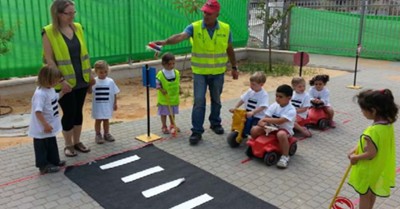
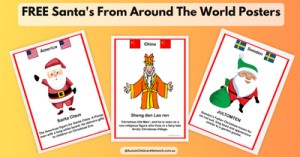

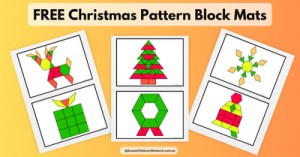

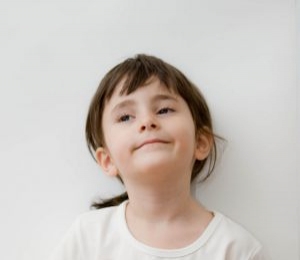 Open ended questions cannot be responded to with one word answers such as yes or no. These types of questions enables a child to provide
Open ended questions cannot be responded to with one word answers such as yes or no. These types of questions enables a child to provide During your child’s preschool years, an important milestone begins to emerge. This is the development of pre-writing skills. Pre-writing skills are used to encourage, develop
During your child’s preschool years, an important milestone begins to emerge. This is the development of pre-writing skills. Pre-writing skills are used to encourage, develop Open ended materials enables children to play freely. They are objects that have no rules to follow, use or function. Raw materials that can be
Open ended materials enables children to play freely. They are objects that have no rules to follow, use or function. Raw materials that can be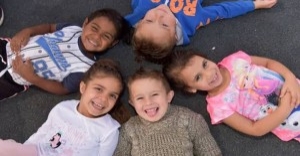 An Acknowledgment of the Country is a way of showing respect for the Traditional Owners and can be given by both non-Indigenous people and Aboriginal
An Acknowledgment of the Country is a way of showing respect for the Traditional Owners and can be given by both non-Indigenous people and Aboriginal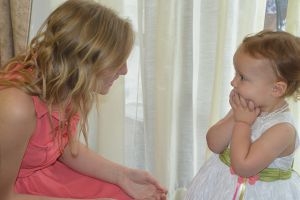 Language plays an important role in a child’s development. It enables a child to communicate effectively with their family, learn at school, socialize with friends,
Language plays an important role in a child’s development. It enables a child to communicate effectively with their family, learn at school, socialize with friends, Like adults, children have to deal with their own stress in life. Moving house, starting a new school, preparing for a new sibling - these are
Like adults, children have to deal with their own stress in life. Moving house, starting a new school, preparing for a new sibling - these are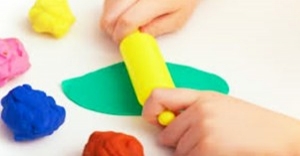 Playdough is such a versatile material. It provides numerous benefits to children as they manipulate it, it is safe and soothing and provides children with
Playdough is such a versatile material. It provides numerous benefits to children as they manipulate it, it is safe and soothing and provides children with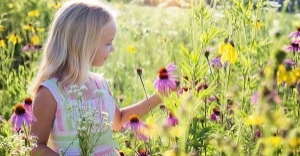 Teaching children about sustainability enables them to appreciate and respect the natural environment. Early childhood services can provide meaningful hand on learning experiences in order
Teaching children about sustainability enables them to appreciate and respect the natural environment. Early childhood services can provide meaningful hand on learning experiences in order Recycling is an important concept that teaches children to care for the environment. It encourages children to be responsible and show a growing appreciating for
Recycling is an important concept that teaches children to care for the environment. It encourages children to be responsible and show a growing appreciating for When children apply paint to paper, glue things together, or pound a lump of clay, they experiment with colour, shape design and texture.
When children apply paint to paper, glue things together, or pound a lump of clay, they experiment with colour, shape design and texture.



